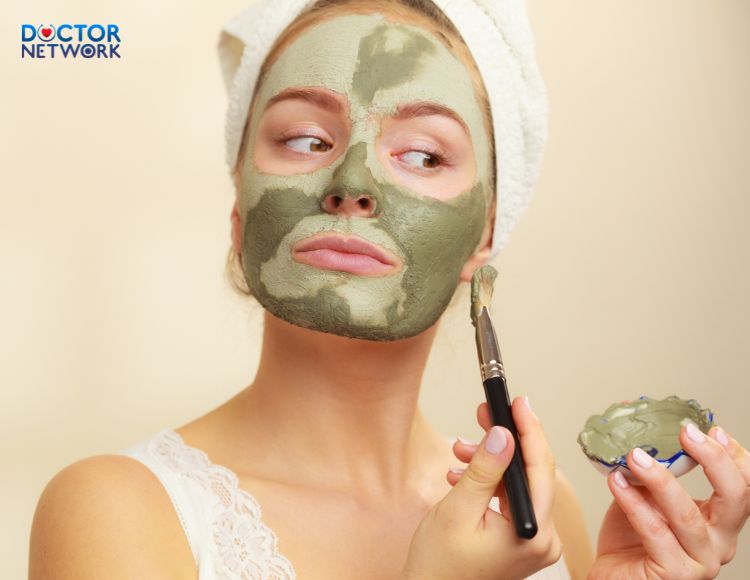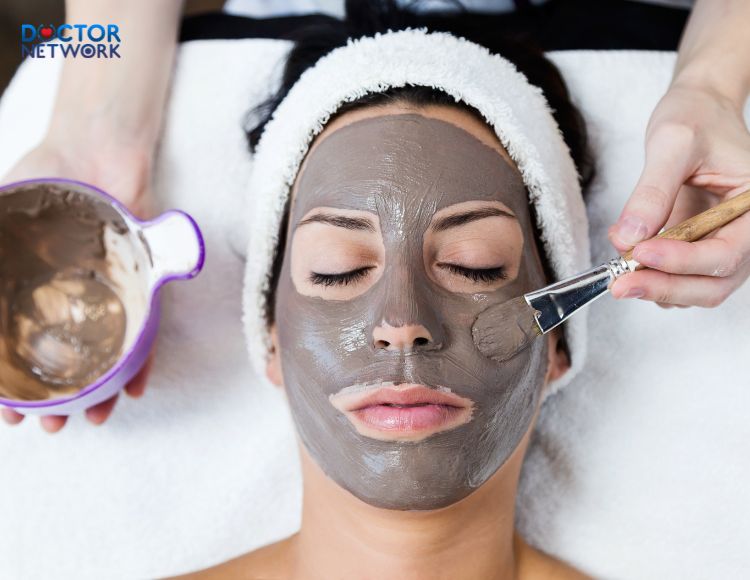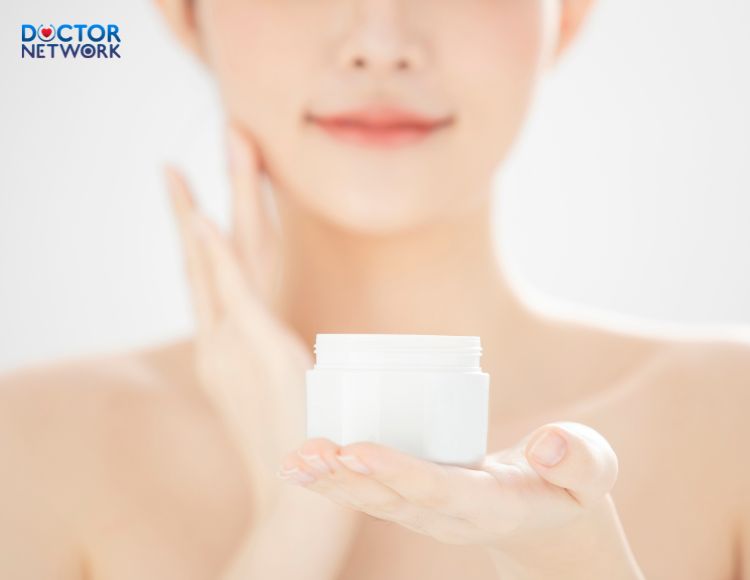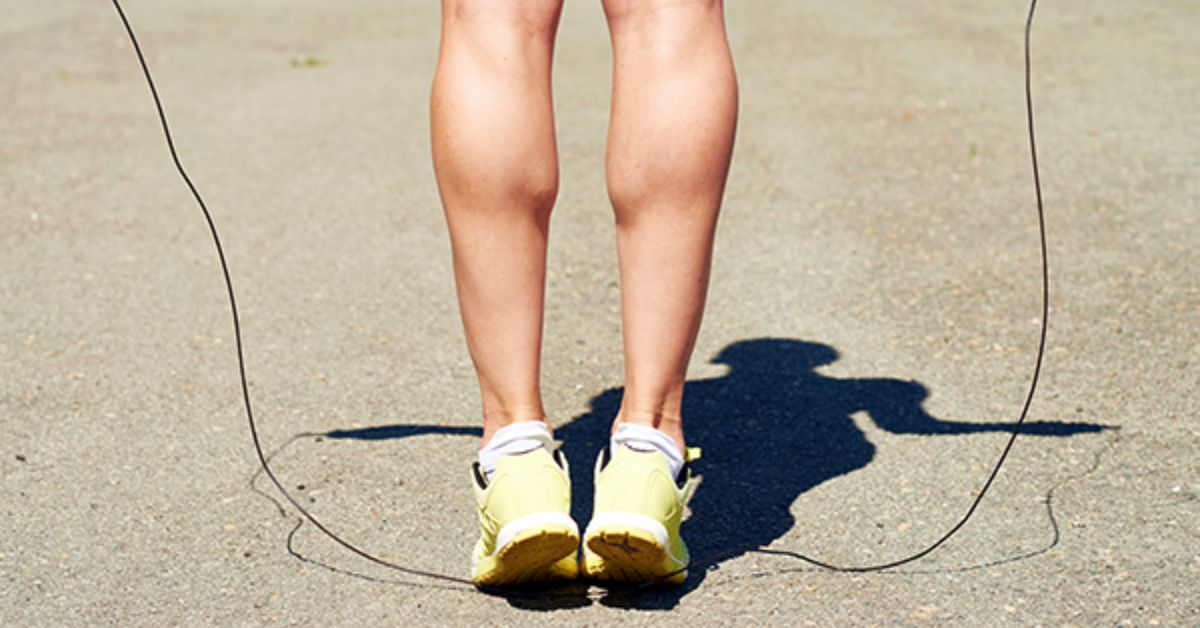In the field of healthcare and beauty, skincare plays a pivotal role not only in maintaining appearance but also in impacting the overall health of the skin. One of the popular and effective skincare methods is the use of clay masks. Correctly applying clay masks not only facilitates deep cleansing, removing impurities and excess oil from pores but also provides essential minerals, improving texture and enhancing the skin’s health.
Choosing the Right Clay Mask
Selecting the appropriate clay is the first critical step in correctly applying a clay mask, optimizing the benefits it offers to the skin. Each type of clay possesses unique properties, suitable for specific skin needs.

Choosing the right clay is the first important step in the process of applying a clay mask properly
- Kaolin, also known as white clay, is the gentlest type and is suitable for all skin types, especially sensitive and dry skin. Kaolin gently cleanses without drying the skin, while also softly absorbing oil and impurities.
- Bentonite clay has a strong oil-absorbing capacity, deeply cleanses pores, and helps remove impurities and toxins from the skin. It is suitable for oily skin and acne-prone skin due to its ability to control excess oil and soothe skin issues.
- Green clay, rich in minerals, is a good choice for combination and problematic skin. This clay helps balance oil, deeply cleanse, and stimulate skin regeneration, leading to bright, healthy skin and minimized wrinkles.
For specific skin types:
- Oily skin: Bentonite is recommended for its strong oil-absorption properties, helping to control excess oil and deeply cleanse pores.
- Dry skin: Kaolin is the best choice due to its gentle cleansing properties without stripping the skin’s natural moisture.
- Combination skin: Green clay is ideal as it balances oil absorption in oily areas while providing moisture to dry areas.
Correct Application of Clay Masks
Applying clay masks correctly requires following specific steps to ensure you maximize the benefits while minimizing the risk of skin irritation.
Step 1: Prepare the Skin
Before applying the clay mask, your skin needs to be properly prepared. Start by cleansing the skin to remove any dirt, excess oil, and makeup from the surface. Use a gentle cleanser, massaging gently in circular motions on the skin, then rinse off with warm water. Warm water not only helps remove impurities but also aids in opening the pores, creating favorable conditions for absorbing nutrients from the clay mask.
Step 2: Apply the Clay Mask
After cleansing, continue by applying the clay mask to your face. Use a mask brush or your fingers to spread a thin, even layer across the face, avoiding the eye and lip areas as these are very sensitive. Ensure you’ve covered the areas needing care without making the mask layer too thick, which could make removal more difficult.
Step 3: Mask Duration
The duration the mask is left on the skin is critical for achieving the best results. A general rule is to keep the mask on for about 10-15 minutes. However, this can vary depending on the type of clay and your skin type. The clay mask should be left on until it begins to dry but is not completely hard, avoiding skin tightening and discomfort. If you experience any discomfort, wash off the mask immediately.

A general rule is to keep the mask on for about 10-15 minutes
Step 4: Rinsing Off
Once the mask has dried appropriately, gently rinse it off with warm water. You may use a sponge or soft cloth to help remove the mask gently. Avoid scrubbing the skin harshly as this may cause irritation. After completely rinsing off, pat the skin dry with a soft towel and proceed with your regular skincare routine, including toner and moisturizer.
Frequency of Clay Mask Application
Proper application of clay masks involves not only the correct method but also determining the appropriate frequency of use to maximize benefits without harming the skin. The frequency of clay mask applications depends on the skin type and specific needs of the individual.
- Oily Skin: Individuals with oily skin may use clay masks 2-3 times a week to control excess oil and minimize pore clogging.
- Dry Skin: For dry skin, it is recommended to use clay masks no more than once a week to avoid stripping the skin of its natural moisture.
- Combination Skin: Those with combination skin can apply clay masks 1-2 times a week, focusing on oily areas without drying out the already dry areas.
- Sensitive Skin: For sensitive skin, caution is advised when using clay masks, and application should be limited to once a week or less, monitoring the skin’s reaction and choosing gentle clays.
Benefits of Clay Masks
Clay masks offer numerous benefits to the skin when used correctly:
- Deep Cleansing: Clay has the ability to draw out impurities, excess oil, and dirt from deep within the pores, providing a thorough cleanse.
- Oil Control: Particularly effective for oily skin, clay masks help regulate the production of excess oil, leaving the skin feeling smooth and matte.
- Acne Reduction: By removing excess oil and deeply cleansing the pores, clay masks help reduce and prevent acne formation.
- Skin Texture Improvement: Regular use helps remove dead skin cells, promoting new skin regeneration, thereby improving the skin’s smoothness and overall texture.
Precautions When Using Clay Masks
When using clay masks, paying attention to the skin’s reaction is crucial to ensure maximum benefits without encountering potential issues.
- Skin Irritation: While clay masks are known for their benefits, some skin types, especially sensitive ones, may react to certain clays. To prevent irritation, perform a patch test on a less sensitive area of the skin before applying the mask to the entire face.
- Dry Skin: Clay can absorb oil and moisture from the skin, leading to dryness, especially if used too frequently or if the mask is left on for too long. To avoid this, do not keep the mask on for more than 15 minutes and always moisturize after use.
Moisturizing After Mask Application
Moisturizing after using a clay mask is an indispensable step in the skincare routine. Since clay masks can remove excess oil and moisture, replenishing the skin’s moisture afterward is essential to maintain balance and prevent dryness.
- Choosing a Moisturizer: Use a moisturizer that is suitable for your skin type. For oily skin, choose a lightweight, non-comedogenic moisturizer. Dry skin requires a more hydrating moisturizer. Combination skin might need different products for different areas.
- When to Moisturize: Immediately after washing off the mask and drying the face, apply a moisturizer to lock in moisture, leaving the skin soft and smooth.
Adhering to these precautions when using clay masks and understanding the importance of moisturizing afterward can help avoid potential issues and maximize the benefits of clay masks, thereby maintaining healthy and attractive skin.

Related Studies
- Removing Dirt and Excess Oil:
- A 2015 study in the “Journal of Cosmetic Dermatology” demonstrated the effectiveness of clay masks in removing dirt, excess oil, and dead skin cells.
- A 2017 article in the “International Journal of Trichology” confirmed the sebum-absorbing capabilities of clay masks, helping to tighten pores.
- Acne Support:
- According to a 2018 study in “Dermatology and Therapy,” clay masks can assist in treating mild to moderate acne.
- A 2019 study in the “Journal of Drugs in Dermatology” highlighted the effectiveness of clay masks in reducing inflammation and swelling associated with acne.
- Improving Skin Smoothness:
- A 2014 article in “Clinical, Cosmetic and Investigational Dermatology” indicated that clay masks help improve skin smoothness and softness.
- A 2016 study in “Skin Pharmacology and Physiology” showed the impact of clay masks on enhancing collagen production, making the skin firmer and more elastic.
This article has provided information on “proper application of clay masks” and related knowledge. Hopefully, it will be beneficial to you.
References:
How To Pure Clay Mask In 5 Easy Steps – L’Oréal Parislorealparis·1
How to Apply and Remove a Clay Mask – L’Oréal Parislorealparisusa·2
Kiểm Duyệt Nội Dung
More than 10 years of marketing communications experience in the medical and health field.
Successfully deployed marketing communication activities, content development and social networking channels for hospital partners, clinics, doctors and medical professionals across the country.
More than 6 years of experience in organizing and producing leading prestigious medical programs in Vietnam, in collaboration with Ho Chi Minh City Television (HTV). Typical programs include Nhật Ký Blouse Trắng, Bác Sĩ Nói Gì, Alo Bác Sĩ Nghe, Nhật Ký Hạnh Phúc, Vui Khỏe Cùng Con, Bác Sỹ Mẹ, v.v.
Comprehensive cooperation with hundreds of hospitals and clinics, thousands of doctors and medical experts to join hands in building a medical content and service platform on the Doctor Network application.

























